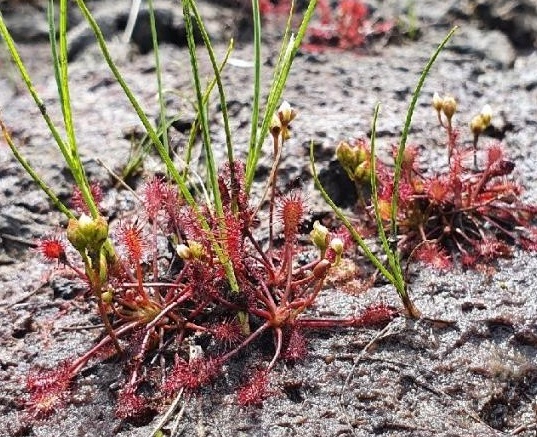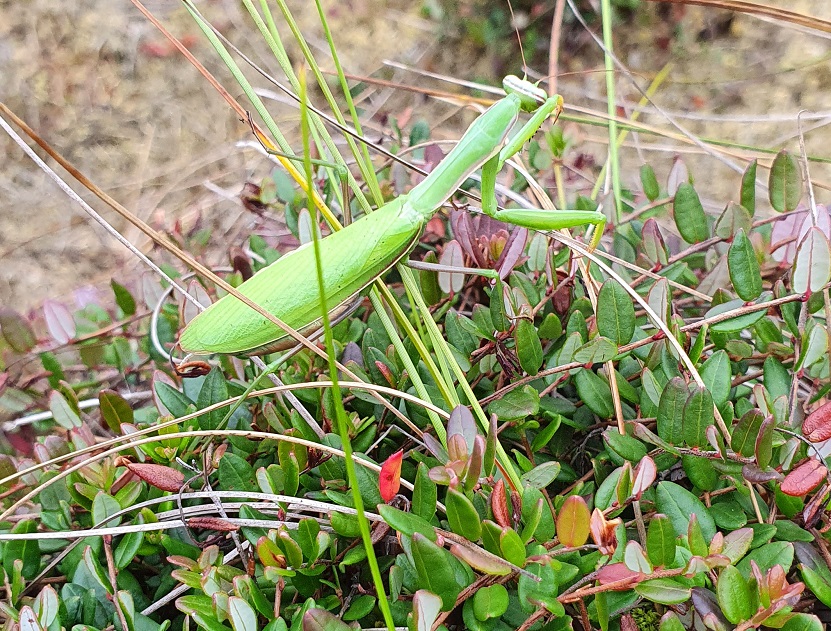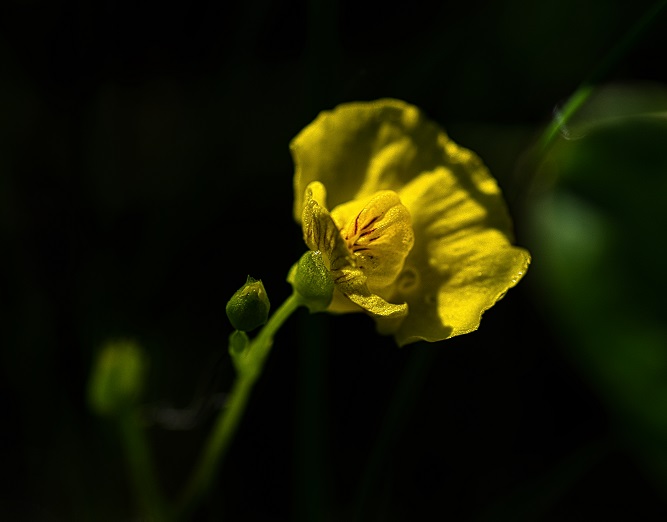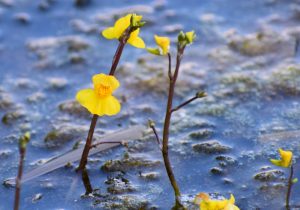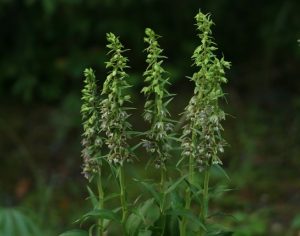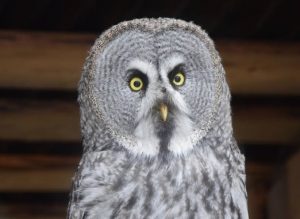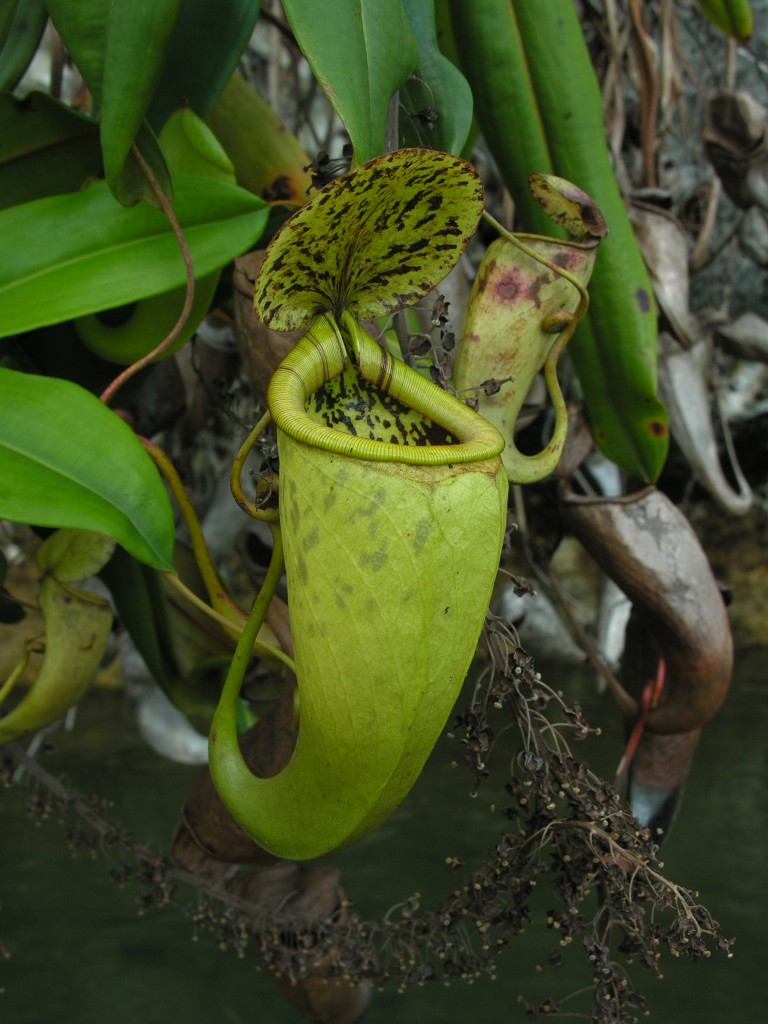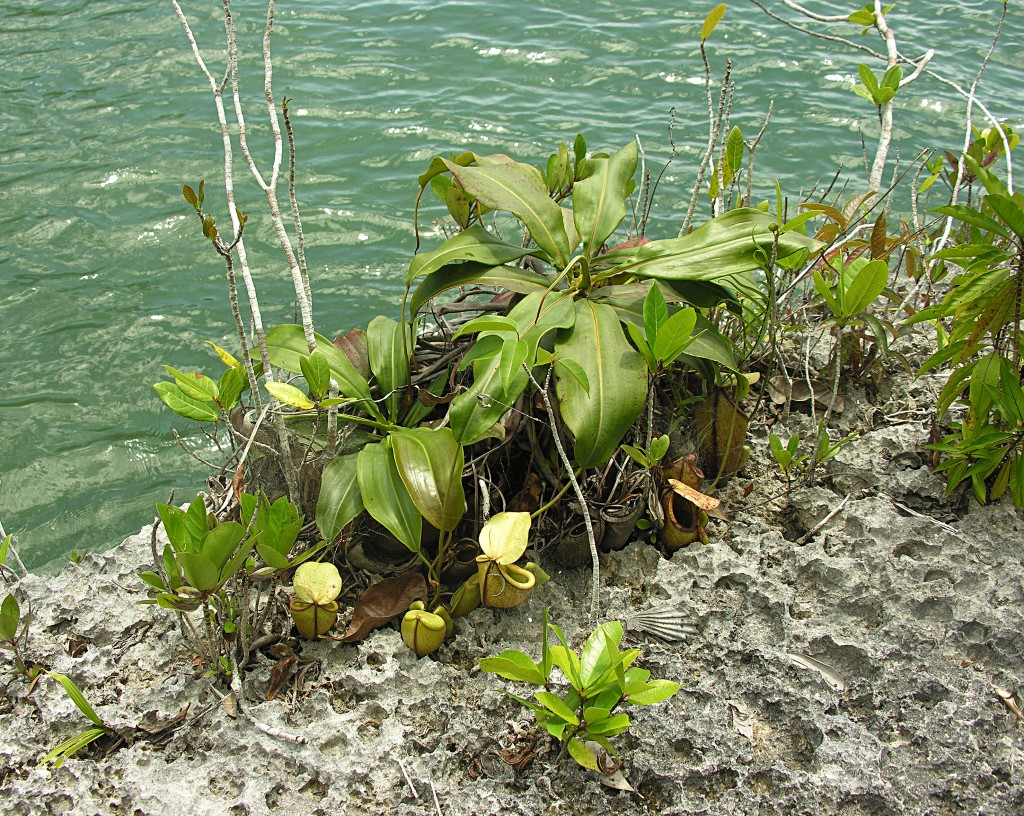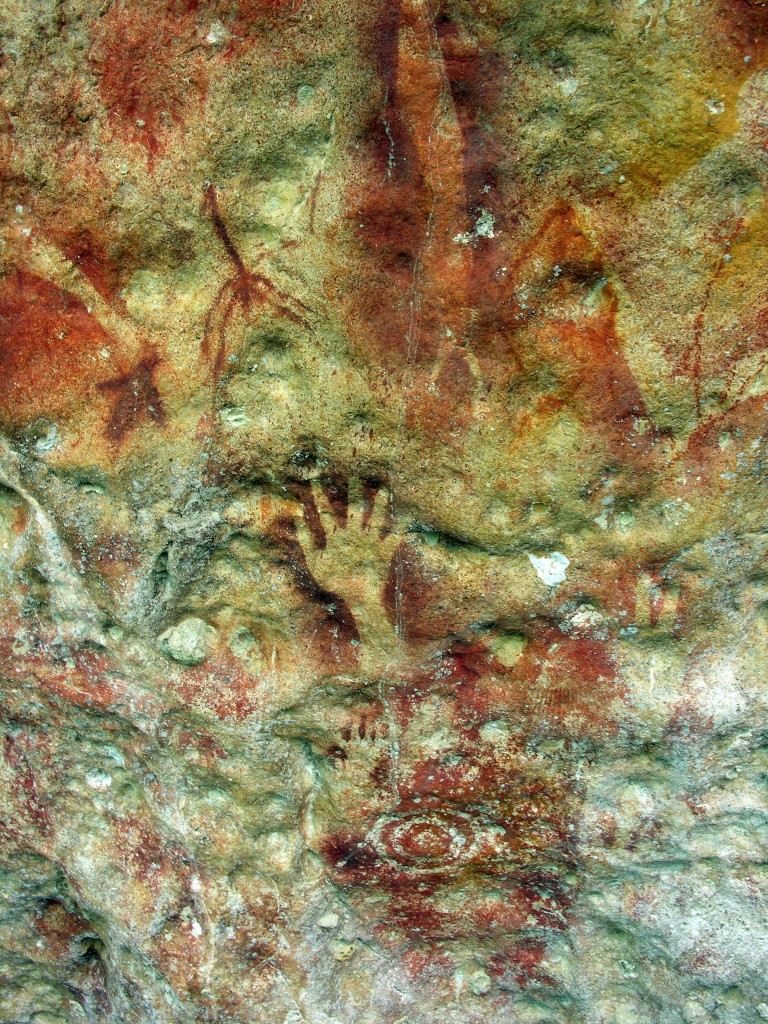After failing to find one of Indonesia’s largest and most spectacular pitcher plants in 2007, I set out again in 2008 to attempt to locate the illusive plant. The species which I sought, is Nepenthes treubiana, a little known pitcher plant which occurs only in New Guinea. The name honours Dutch botanist Melchior Treub who extensively studied the flora of the Dutch East Indies from 1880 until 1909. The plant grows only on remote cliffsides along the coast of New Guinea, but little information exists on the ecology or general appearance of the plant.
In May, 2008, I arrived in Papua, and after meeting a friend, Tommy Mark, set out to find N. treubiana. Observations of the plant had previously been made on the cliffsides of the MacCluer Gulf, but equally records exist for it occurring on the island of Misool, to where I had traveled the previous year and failed to find the plant. The records from the MacCluer Gulf seemed to be more reliable, as that location was where the plant had originally been discovered.
After several days flying between towns, Tommy and I arrived at a remote fishing village along the coast of the MacCluer Gulf. At the time, the local petrol crisis had made it difficult for many fishermen to afford petrol in order to drive their boats to fish, and initially, Tommy and I could not find any local fishermen with sufficient available petrol, to take us along the coast and search for the plant. After a day or chatting and discussing with locals from the village, eventually we found an elderly fisherman, with a seaworthy boat, who was willing to join our search for the plant.
Many of the fishermen actually knew pitcher plants, and tried to help our search by describing or drawing pitchers of the plants they had in mind. Several described the plants as giant orchids, others thought they could snap shut to catch flies, but the fisherman who had promised to take us, seemed to know the plant very well, and drew a picture of it quite accurately. The next morning, we returned to the docks at about 6.00 am, and our fisherman friend was ready, waiting with his boat! Tommy and I jumped in, and we set a course to explore along the coast.
The scant information that exists for this plant, suggests that it grows on limestone cliffs, just above the water, along the part of the coast which we were travelling. We searched the cliffs intensively for pitcher plants, and drove between beautiful islands, and past breath taking coral reefs and beaches. After an hour or so, Tommy spotted a huge vine of a pitcher plant growing on the vertical cliffside, about 30 metres above the water. It was far too high for us to reach, be we continued out search, and soon discovered many more plants growing close to the water level. Immediately, it was clear, the plant which we had found, was indeed the illusive N. treubiana, for no other species of Nepenthes from New Guinea grows produces traps of comparable colouration, size or structure.
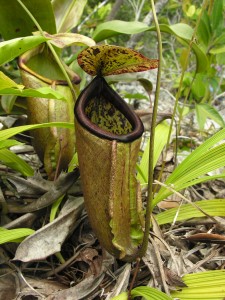 The lower pitchers are wholly ovate, infundibular or cylindrical, up to 27 cm long, 14 cm wide (although generally smaller than these maximum measurements) and variably swollen and inflated. Often, the width of the pitcher narrows slightly just below the pitcher opening, and this causes the upper half of the trap to appear inflated. Wings up to 2 cm wide (occasionally up to 3 cm wide), fringed with narrow filaments up to 11 mm (although often less tha 6 mm long) long run down the front of the lower pitchers. Often the wings are incurved towards onanother, and in some strains they may be wavy. The peristome is glossy, loosely cylindrical, up to 2 cm wide, and expanded towards the sides and back of the pitcher opening. The peristome is lined with ribs up to 2 mm high, spaced up to 2 mm part. The ribs are elongated on the inner edge of the peristome and form inward protruding spikes up to 2 mm long. At the back of the pitcher opening (below the lid), the peristome is variably raised, often with a gap (up to 4 mm wide). The lid is elliptic or sub–orbicular, up to 11 mm long and 6.5 mm wide. The lid lacks an appendage. The spur is unbranched and up to 12 mm long.
The lower pitchers are wholly ovate, infundibular or cylindrical, up to 27 cm long, 14 cm wide (although generally smaller than these maximum measurements) and variably swollen and inflated. Often, the width of the pitcher narrows slightly just below the pitcher opening, and this causes the upper half of the trap to appear inflated. Wings up to 2 cm wide (occasionally up to 3 cm wide), fringed with narrow filaments up to 11 mm (although often less tha 6 mm long) long run down the front of the lower pitchers. Often the wings are incurved towards onanother, and in some strains they may be wavy. The peristome is glossy, loosely cylindrical, up to 2 cm wide, and expanded towards the sides and back of the pitcher opening. The peristome is lined with ribs up to 2 mm high, spaced up to 2 mm part. The ribs are elongated on the inner edge of the peristome and form inward protruding spikes up to 2 mm long. At the back of the pitcher opening (below the lid), the peristome is variably raised, often with a gap (up to 4 mm wide). The lid is elliptic or sub–orbicular, up to 11 mm long and 6.5 mm wide. The lid lacks an appendage. The spur is unbranched and up to 12 mm long.
The exterior of the lower pitchers are usually olive green, yellow, or occasionally orangish red and may be lined with flecks of dark red or purple. The interior of the trap is yellowish green, often with large, dark red, purple or black blotches. The peristome may be yellow, purple or black and the lid is the same colour as the exterior of the trap, often with dark purple blotches on its underside. Occasionally, all parts of the lower trap may be pure yellowish green or reddish.
The upper pitchers are up to 26 cm long and 12 cm wide (although generally smaller than these maximum measurements). The traps are wholly infundibular, although often, the width of the pitcher narrows slightly just below the pitcher opening, and this causes the upper half of the trap to appear inflated. The front face of the pitcher is flat, particularly towards the base. Wings are reduced to narrow ridges which run down the front of the pitcher, or are not discernable at all. All other parts are consistent with the lower pitchers.
The exterior of the upper pitcher is usually pure yellowish green. The interior of the trap is yellow, often lined with large, dark purple or black blotches. The peristome is yellowish green, striped with variable bands of dark purple or black, and the lid is yellow, often with black or purple flecks on its underside. In some strains, the pitchers are consistently pure yellowish green.
In the MacCluer Gulf, N. treubiana is most common on the landward cliffs of small islands that lie along the coast, and this is suggestive that this species prefers protection from saltwater spray. Nevertheless I observed populations of N. treubiana growing just a few centimetres above the level of the high tide watermark, and it would seem extremely likely that these plants are exposed to saltwater occasionally. This is very unusual, as most Nepenthes are intolerant of saline conditions.
Whilst exploring the MacCluer Gulf, I observed that populations of this species consist mostly of massive, mature plants which flower and produce seed prolifically. The inflorescence may be up to 75 cm long and may consist of several hundred individual flowers. Each mature growth point may produce multiple inflorescences each year, whch would suggest the total seed production of this species is extreme high. Yet young plants are seldom encountered. Considering the habitat of this plant, it seems likely that the germination and recruitment rate is extremely low as the overwhelming majority of the seed is likely blown from the cliffsides and falls into the ocean below. The likelihood of an individual seed reaching habitat where it may germinate is exceptionally small, and so this explains the need for this plant to produce an immense quantity of seed in order to procreate.
Observing the plants was not easy, the waves continually smashed the small boat against the cliffs! But after a few hours, and after driving between many islands along the coast to see different populations of N. treubiana, we began the journey back. On the way, the fisherman drove by a small cove on the cliffs of a small island. He showed Tommy and I three magnificent sets of paintings on the cliffs that were marked with red pigment. The paintings all had four main symbols – the eye, the hand, the octopus and the fish. Each set of images consisted of many dozen drawings! I still am not sure whether the cave paintings have previously been documented or not. Certainly paintings on the cliffsides from the MacCluer Gulf have been documented, but whether these particular sets have been previously studied remains unclear.
Although N. treubiana does not occur within any form of national park or protected area, the outlook for this species in the wild is quite positive. Extensive stands of this plant occur across the remote cliffsides of the MacCluer Gulf and there is no present threat to these populations which mostly are very inaccessible. For the foreseeable future, this remarkable pitcher plant, which is found only in Indonesia, will have a future in its beautiful natural habitat!
Stewart McPherson
